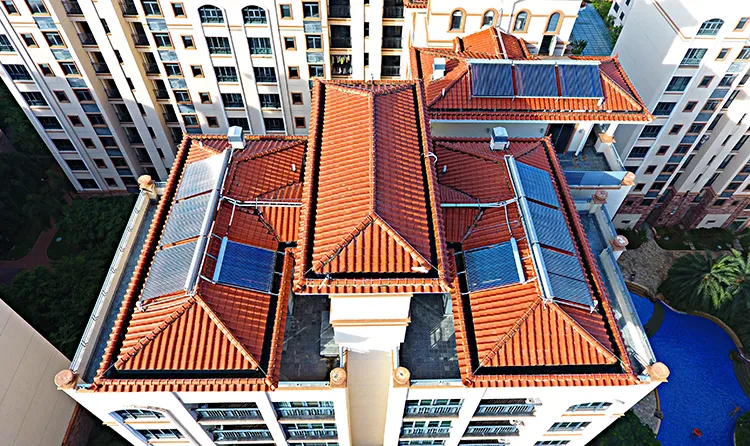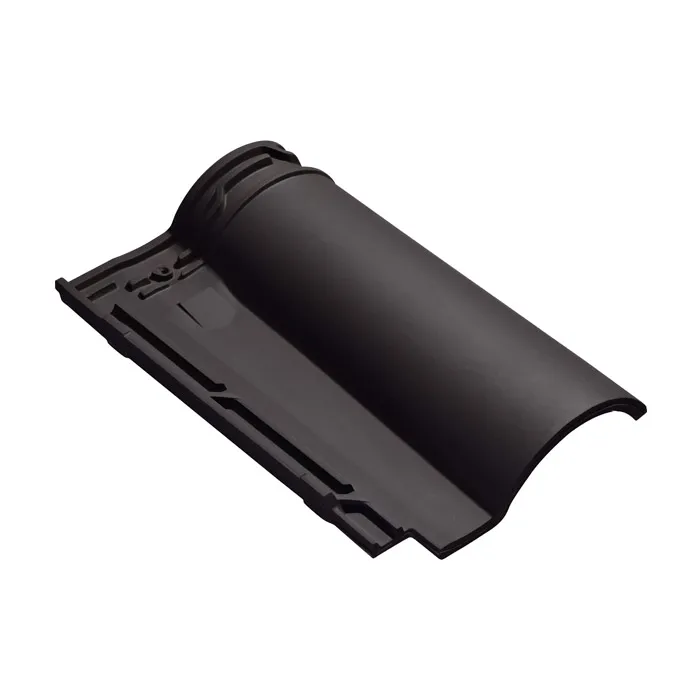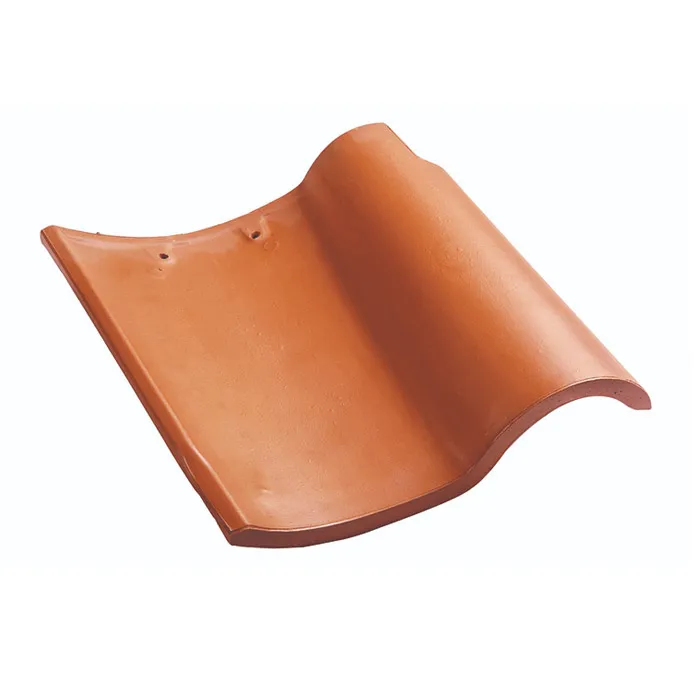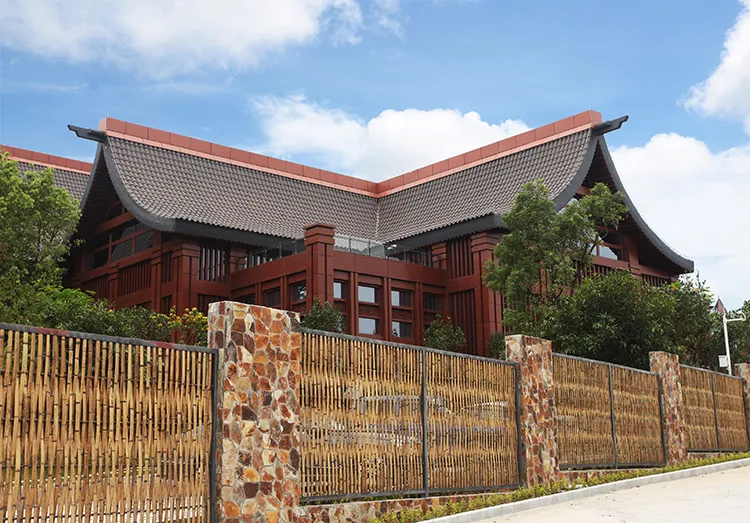Clay roof tiles are widely used across the world due to their aesthetics, durability and environmentally friendly properties. However, there are significant differences in the lifespan of different types of clay tiles. So, which clay roof tiles last the longest? How many years can it specifically last? This article will explore this issue in detail and analyze the performance and maintenance requirements of different types of clay tiles.

How many types of clay roof tiles are there?
The main types of clay roof tiles include: flat tiles, Roman tiles, Spanish tiles, French tiles and Japanese tiles.
1. Flat Tile: Simple appearance, often used in modern style buildings.
2. Roman Tile: It has a wavy shape and is suitable for traditional and classic style buildings.
3. Spanish Tile: Known for its graceful curves and rich colors, it is often used in Mediterranean-style buildings.
4. French Tile: Exquisite design, suitable for European-style buildings.
5. Japanese Tile: Commonly found in traditional Japanese buildings, it has a unique cultural flavor.
Of these types, Roman tiles and Spanish tiles are generally considered to have the longest lifespan due to their craftsmanship and material selection.
What are the characteristics of Roman tiles and Spanish tiles?
Characteristics of Roman tiles
Roman tiles have the characteristics of wavy design, high-temperature firing, and various colors.
● Wave design: Enhances the drainage performance of the tiles and prevents rainwater from accumulating.
● High-temperature firing: makes the tiles extremely hard and dense, enhancing durability.
● Various colors: Rich color choices can meet the needs of different architectural styles.
Characteristics of Spanish tiles
Spanish tiles are known for their unique curves and color variety. Features include: curvilinear design, use of high-quality clay, and rich colors.
● Curve design: not only beautiful, but also enhances drainage effect.
● High-quality clay: High-quality clay is selected and fired at high temperatures to ensure the tiles are strong and durable.
● Rich colors: Various color choices enhance the aesthetics of the building.

Which clay roof tiles last the longest?
Clay roof tiles that last the longest:
Of all clay roof tiles, Roman and Spanish tiles generally have the longest lifespan due to their craftsmanship and material selection. Specifically, the service life of these two types of tiles can reach more than 100 years.
The service life of Roman tiles
The lifespan of Roman tiles typically ranges from 50 to 100 years, and even longer in some cases. This is mainly due to its high-temperature firing process and high-quality clay materials, which give the tiles extremely high hardness and durability.
● Maintenance requirements: Roman tiles have low maintenance requirements and only require regular inspection and cleaning to prevent debris accumulation and damage.
● Strong weather resistance: Roman tiles can withstand various extreme weather conditions, such as storms, hail and high temperatures, maintaining their stability and functionality.
Spanish tile lifespan
The service life of Spanish tiles is also between 50 and 100 years, or even longer. Its high-quality manufacturing process and material selection make the tiles extremely durable and weather-resistant.
● Maintenance and maintenance: The maintenance of Spanish tiles is also relatively simple. You only need to regularly check and repair damaged tiles to maintain their good waterproof performance.
● Strong environmental adaptability: Spanish tiles can adapt to various climatic conditions and maintain their beauty and functionality.

What are the factors that affect the service life of clay tiles?
Although Roman and Spanish tiles have an extremely long lifespan, their actual lifespan is affected by a variety of factors, including installation quality, climate conditions and maintenance.
Installation quality
Proper installation methods and quality construction are key to ensuring a long life for clay tiles. If installed improperly, tiles can become loose, broken, or leak, affecting their lifespan.
● Professional construction: It is recommended to choose a qualified construction team for installation to ensure that each tile is installed firmly to avoid quality problems.
● Detail processing: Special attention should be paid to waterproofing around the joints of the roof, vents and skylights to avoid water leakage problems.
Climatic conditions
Although Roman and Spanish tiles are able to withstand a variety of climate conditions, extreme weather conditions such as storms, hail, or extremely high temperatures can still cause damage to the tiles. Therefore, the climatic conditions in the area will also affect the lifespan of the tiles.
● Weather resistance: High-quality clay tiles have good weather resistance and can remain stable under various extreme climate conditions.
● Protective measures: In extreme climate conditions, it is recommended to take appropriate protective measures, such as regular inspection and repair of tiles, to ensure their good condition.
Maintenance
Regular inspection and maintenance are essential to extend the life of your clay tiles. Timely removal of debris on the tiles, repairing damaged tiles, checking the waterproof layer, etc. can effectively extend the life of the tiles.
● Regular Inspections: It is recommended that a complete inspection be performed at least once a year, especially after severe weather.
● Repair in time: If damaged or loose tiles are found, they should be repaired or replaced in time to avoid the problem from expanding.

Actual case analysis
Examples of historical buildings
Many historic buildings used Roman or Spanish tiles and are still standing after hundreds of years of wind and rain. For example, many ancient buildings in Italy, Greece and Spain have Roman or Spanish tiles on their roofs. During the restoration of these buildings, the original tiles were often found to be still intact, a testament to the durability of these tiles.
Examples of modern architecture
In modern architecture, there are also many examples that prove that Roman tiles and Spanish tiles can be used for 100 years. For example, many historic residences and public buildings in California, USA, have Roman tiles or Spanish tiles on their roofs that have a history of more than a hundred years. The roofs of these buildings are not only intact but also still have good waterproofing and thermal insulation properties.

